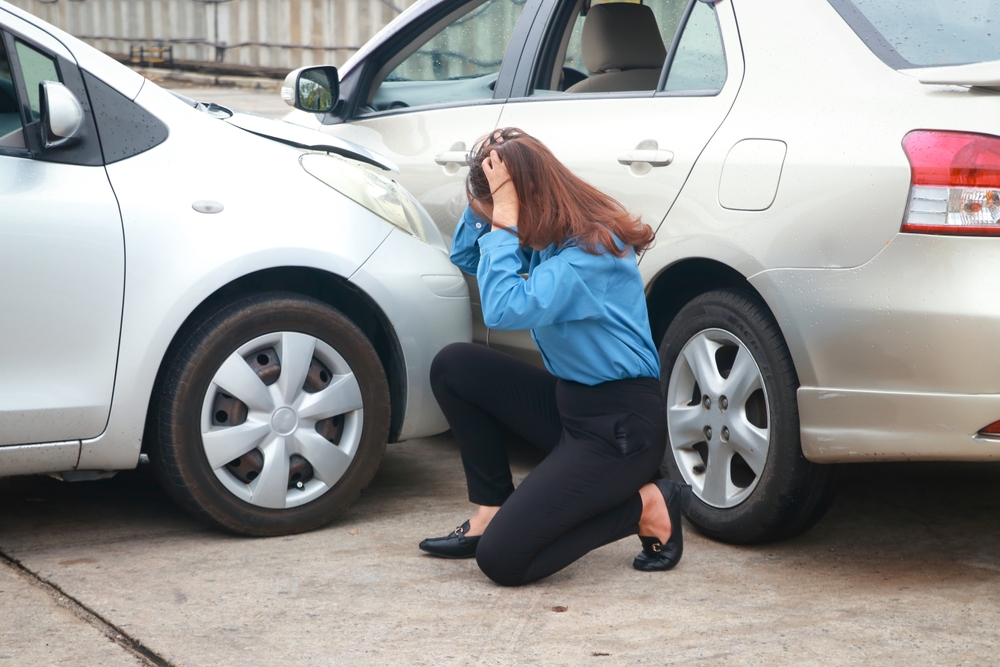Negligent drivers cause car accidents in several ways, including speeding, distracted driving (such as texting or talking on the phone), running red lights, driving under the influence of alcohol or drugs, and tailgating. These reckless actions often lead to collisions, resulting in serious injuries and damages.
A skilled Philadelphia car accident lawyer can handle every step of the legal process for you, from gathering evidence and negotiating with insurance companies to filing a lawsuit if necessary. They will ensure you meet legal deadlines and work to secure maximum compensation for medical expenses, lost income, pain and suffering, and other damages. Having an experienced attorney on your side ensures that your rights are protected throughout the legal process.
Get A Free Consultation Today!
Most Common Ways that Negligent Drivers Cause Car Accidents
Negligent driving is a leading cause of car accidents, and it happens when drivers fail to follow traffic laws or use unsafe driving practices.
One of the most common causes is distracted driving. With the rise of smartphones, many drivers become distracted with texting, checking social media, or using apps while behind the wheel. These distractions take a driver’s attention away from the road and increase the chances of missing important signs or not reacting quickly enough to sudden changes, like another car stopping. Even a brief moment of distraction can lead to a collision – especially in fast-moving traffic.
Another frequent cause of accidents is speeding. Driving too fast for road conditions or exceeding the speed limit can make it harder for a driver to stop in time if something unexpected happens. Speeding also reduces the amount of time a driver has to react to a hazard, which can lead to more severe accidents when one does occur.
Reckless driving is also a major contributor to car crashes. This includes behaviors such as tailgating, weaving in and out of traffic, or running red lights. Reckless drivers often ignore traffic laws and prioritize getting to their destination faster, putting everyone else on the road at risk. These types of drivers may not consider the safety of others, which can lead to crashes that are both dangerous and preventable.
Another significant factor is driving while under the influence of alcohol or drugs. When a driver is intoxicated or impaired, their reaction times are slower, and their judgment is compromised. This makes it much more likely that they will misjudge distances, fail to notice other vehicles or make dangerous decisions, such as turning into oncoming traffic. Driving under the influence is illegal and can have severe consequences, both for the driver and other road users.
Fatigue is another dangerous form of negligence. Drivers who are overly tired may struggle to stay alert, making it more difficult to focus on the road. In some cases, fatigued drivers may even fall asleep at the wheel. Drowsy driving is just as dangerous as drunk driving because it impairs a person’s reaction times and decision-making abilities.
In addition to these factors, poor weather conditions can contribute to accidents. Negligent drivers may fail to adjust their driving to match the conditions, such as driving too fast in rain or fog. This can lead to skidding, loss of control, or even hydroplaning.
Most Frequent Injuries that May Occur in Car Crashes

Car accidents resulting from negligent drivers often lead to a wide range of physical and mental injuries, varying in severity. These car accident injuries can have long-term consequences, affecting victims’ quality of life and ability to function.
Physical injuries are the most immediate and visible consequence of a car accident. One of the most common injuries is whiplash – a type of neck injury resulting from the rapid back-and-forth motion of the victim’s head during a collision. Whiplash can lead to pain, stiffness, and difficulty moving the neck, and in some cases, it can cause long-term discomfort. Another frequent physical injury is fractures or broken bones. These injuries can occur when a person is thrown against the interior of the car or when the vehicle itself is crushed or twisted in the impact. Broken arms, legs, ribs, and even spinal fractures are all possible outcomes of a high-impact crash.
Traumatic brain injuries (TBIs) are another significant risk. Even when a person wears a seatbelt, the force of a collision can cause the victim’s head to hit the steering wheel, window, or dashboard. Concussions, which are one form of TBI, are common, but more severe forms of brain injuries can result in permanent cognitive or physical impairments. These injuries may lead to difficulties with memory, concentration, and motor skills, profoundly affecting a person’s daily life.
Internal injuries like organ damage are also common in severe car accidents. The force of the crash can cause internal bleeding, damage to the lungs, liver, or kidneys, and, in extreme cases, ruptured organs. These injuries often require immediate medical attention and can sometimes result in permanent damage.
On the mental side, post-traumatic stress disorder (PTSD) is a frequent consequence of car crashes. Victims may experience flashbacks, nightmares, anxiety, and emotional numbness, especially after a particularly violent or life-threatening accident. Additionally, depression and anxiety disorders are common, as individuals may struggle to cope with the aftermath of the accident, including physical pain, financial strain, or lifestyle changes.
How to Prove Negligence in a Third-party Car Accident Claim
In a third-party car accident claim, proving negligence is essential for securing compensation for your injuries and damages. Negligence occurs when a driver fails to exercise reasonable care, resulting in harm to others. To successfully prove negligence, there are several legal elements that must be established, and a car accident lawyer can introduce key types of evidence to support your case.
- Duty of Care: The first element is proving that the negligent driver owed you a duty of care. Every driver has an obligation to drive safely and obey traffic laws to avoid causing harm to others. In a car accident case, the victim must show that the other driver (the defendant) had a duty to drive responsibly, which is usually straightforward since all drivers are legally required to drive safely.
- Breach of Duty: Next, your lawyer must show that the defendant breached this duty of care. This means that the driver engaged in negligent behavior, such as speeding, running a red light, or texting while driving. To prove this element, your lawyer will look for evidence that the driver violated a traffic law or acted recklessly.
- Causation: Causation is the third element. Your lawyer must prove that the breach of duty directly caused the accident and your injuries. This is often one of the more complicated aspects of the case, as the defense may argue that other factors contributed to the crash. To establish causation, your lawyer may use expert testimony or accident reconstruction to demonstrate how the other driver’s actions led to the accident.
- Damages: Finally, you must show that you suffered actual damages as a result of the car accident. These damages can include medical expenses, lost income, property damage, and pain and suffering. Evidence of damages is typically supported with medical records, bills, and other documentation.
Types of Evidence that a Car Accident Lawyer Can Introduce:
Police Reports: These reports contain important details about the accident, including the responding officer’s observations, any citations issued, and statements from the involved parties and witnesses.
Eyewitness Testimony: Witness statements can support your account of the accident and establish how it occurred.
Photographs and Videos: Photos of the accident scene, vehicle damage, and visible injuries provide strong visual evidence of the crash’s severity and circumstances.
Medical Records: Detailed medical reports are vital in proving the extent of your injuries and linking them to the accident.
Expert Testimony: Experts, such as accident reconstructionists, can explain how the accident happened and support your claim of negligence.
By gathering and presenting this evidence, a lawyer can establish the legal elements of negligence and strengthen your third-party case for compensation.
Get A Free Consultation Today!
When is Litigation Necessary in a Third-party Car Accident Case?
Litigation in a third-party car accident case becomes necessary when a settlement cannot be reached between the parties involved or when the other driver’s insurance company refuses to offer a fair settlement. If negotiations fail or the at-fault party denies liability, taking the case to court may be the only way to ensure that you are properly compensated for your injuries and damages.
Sometimes, the at-fault driver’s insurance company may offer an amount that is far less than what you deserve or refuses to offer compensation entirely. In these cases, it may be necessary to file a lawsuit to pursue a fair settlement.
Also, if the other driver denies responsibility for the accident, litigation may be necessary to establish fault in court. If the evidence is complex or unclear, going to trial may provide the opportunity to present all available evidence.
Also, if your injuries are severe or you expect long-term consequences (like ongoing medical treatment, permanent disability, or emotional trauma), a lawsuit may be the best way to seek full compensation for both current and future damages.
A skilled car accident lawyer can guide you through the litigation process, ensuring that you meet all legal requirements. By having an experienced lawyer handle the litigation process, you can focus on recovering from your injuries while ensuring that your legal interests are effectively represented.
Third-party Damages You May Receive for Car Accident Injuries

When you suffer an injury in a car accident due to another party’s negligence, you may be entitled to recover various types of third-party damages. These damages are meant to compensate you for the losses you’ve suffered and help you return to your normal life. The types of damages you can recover depend on the severity of your injuries, the circumstances of your accident, and the specific laws in your state.
First, economic damages cover the financial losses you have incurred as a result of the accident. They are typically easier to calculate because they are based on actual expenses or measurable losses.
Medical expenses include all costs associated with treating your injuries, such as hospital bills, doctor’s visits, surgeries, medications, physical therapy, and long-term care. If you need ongoing treatment, future medical expenses can also be included in your personal injury claim.
If your injuries prevent you from working, you can recover the income you’ve lost as a result. This can also include future lost earnings if your injuries prevent you from working long-term or permanently.
If your vehicle or personal property was damaged in the accident, you can seek compensation for repairs or replacement costs. Out-of-pocket costs include any additional expenses related to your recovery, such as transportation costs to medical appointments, home care, or modifications to your home if your injuries require it.
Non-economic damages, on the other hand, compensate for the intangible losses that result from an accident. These damages can be more difficult to quantify but are equally important in addressing the full effects of your injuries.
Pain and suffering compensation addresses physical pain, emotional distress, and discomfort that you have experienced as a result of your injuries. It can also cover any future pain and suffering you may endure as a result of long-term or permanent injuries. If the car accident has affected your ability to enjoy daily activities, hobbies, or a normal lifestyle, you may also be entitled to compensation for this loss.
In some cases, if the defendant’s conduct was particularly reckless or egregious (such as driving under the influence of alcohol or drugs), you may be awarded punitive damages. These damages are meant to punish the defendant and deter similar behavior in the future. Punitive damages are not intended to compensate the victim but rather to act as a deterrent for extreme recklessness or negligence.
By working with an experienced lawyer, you can ensure that all of these damages are accurately calculated and pursued in your case. This will give you the best chance to fully recover the compensation you deserve for the injuries and losses you’ve sustained.
Talk with a Knowledgeable Car Accident Attorney Right Away
If you suffered injuries in a recent car crash, a skilled personal injury attorney can handle the legal process for you. Your lawyer will aggressively advocate on your behalf when negotiating with insurance company representatives or litigating your case in the court system for an efficient resolution.
